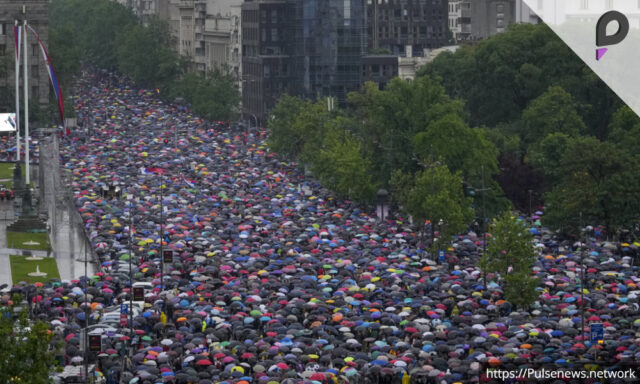Belgrade: Thousands of people in Serbia took to the streets on Friday, demanding justice over a deadly train station roof collapse. The incident occurred last month at a railway station in Novi Sad, a city in northern Serbia.
The roof, which had been recently renovated, collapsed on November 1st. The disaster resulted in 15 people losing their lives. The tragedy sparked outrage across the nation, with citizens blaming government officials for negligence.
Protesters gathered in the capital city, Belgrade, and other parts of the country, including Novi Sad. Demonstrators primarily targeted President Aleksandar Vučić and his ruling Serbian Progressive Party.
Opposition groups, students, and unions, including farmers, organized the protests. They argued that corruption and mismanagement were key factors leading to the accident. University students, in particular, played an instrumental role in calling for the demonstrations.
The protests were marked by anger and frustration. Many criticized the lack of accountability following the tragedy. After the incident, opposition members demanded the resignation of officials responsible for the railway’s safety.
A government minister was briefly arrested after the incident but was released later. The arrest did little to calm the public’s growing dissatisfaction with the government’s response.
Serbia’s transportation infrastructure has been under scrutiny for years, with several accidents raising concerns about maintenance and oversight. The collapse of the roof, however, has triggered the largest protests the country has seen in recent years.
The protests reflect a broader issue with public confidence in Serbia’s leadership, particularly concerning corruption. Critics of President Vučić’s administration argue that the incident highlights systemic issues in the country’s governance.
The tragic event continues to draw attention to the safety standards in public infrastructure projects, especially regarding government oversight. Demonstrators have demanded swift justice for the victims’ families and comprehensive reforms in the way government projects are handled.
As these protests unfold, public dissatisfaction with the government is intensifying, fueling debates on accountability and governance. The political ramifications of these demonstrations remain unclear as authorities respond to the protests.











